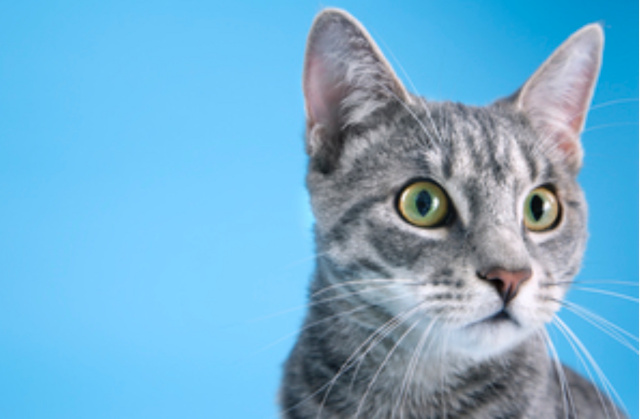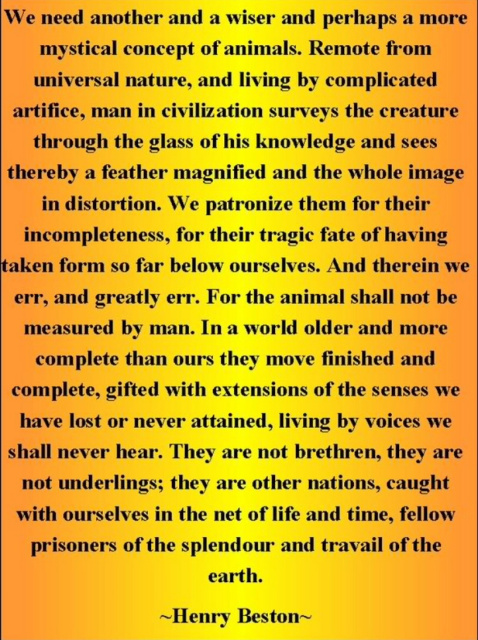 The Companion Animal Euthanasia Training Academy conducted an online survey between December 2021 and January 2022 in a responsible effort to learn how pet euthanasia clients define “good death”. I took the survey and regard it as an important step in gathering statistics that seem so lacking regarding this critical procedure. It showed CAETA as a major, if not only, organization conducting this vital type of research. It’s needed to determine pet euthanasia status so that it gets proper attention.
The Companion Animal Euthanasia Training Academy conducted an online survey between December 2021 and January 2022 in a responsible effort to learn how pet euthanasia clients define “good death”. I took the survey and regard it as an important step in gathering statistics that seem so lacking regarding this critical procedure. It showed CAETA as a major, if not only, organization conducting this vital type of research. It’s needed to determine pet euthanasia status so that it gets proper attention.Recent Posts
- Euthanasia Study Case
- Good Death Revolution
- Sedation Heroics
- Moonlighting
- Four-year Anniversary
- Will It Happen Again? Minimizing Dysthanasia
- Dysthanasia
- Responses to Pet Euthanasia
- CAETA Survey and Comments
- Euthanasia Case Review Background
Archives
CAETA Survey and Comments
December 16, 2022 @ 1:38 PM
 The Companion Animal Euthanasia Training Academy conducted an online survey between December 2021 and January 2022 in a responsible effort to learn how pet euthanasia clients define “good death”. I took the survey and regard it as an important step in gathering statistics that seem so lacking regarding this critical procedure. It showed CAETA as a major, if not only, organization conducting this vital type of research. It’s needed to determine pet euthanasia status so that it gets proper attention.
The Companion Animal Euthanasia Training Academy conducted an online survey between December 2021 and January 2022 in a responsible effort to learn how pet euthanasia clients define “good death”. I took the survey and regard it as an important step in gathering statistics that seem so lacking regarding this critical procedure. It showed CAETA as a major, if not only, organization conducting this vital type of research. It’s needed to determine pet euthanasia status so that it gets proper attention.
(For credits, click or tap photo.)
I recall being extremely confused, shocked and surprised after Tinkerbell’s dysthanasia (I yet call it an atrocity) because I’d never heard of anything like that happening before. I became extremely anxious to learn if we were the only such victims. It was an extreme relief to learn online that we were among many! But how many remained unknown until I applied my research for the “History” page of this website to the results of the CAETA survey. My comments, following the link below to the DVM 360 magazine article discussing the survey, give an estimate of the damage done by dysthanasia. Click or tap here to view the article.
“Hi, Dr. Kathleen:
Here are my comments as a dysthanasia client on the article and survey.
As expected and proper, the authors gave a positive spin. But I think doing so risks promoting unwarranted complacency. The same shouldn’t be expected of my comments. And although it seems that everything the article says is true, for me, it’s not complete. The quote below is an example.
“Veterinary professionals, relying on their expertise and experience, aim to perform euthanasia in ways that align with the best interest of all involved.”
The account of the dysthanasia I witnessed and of those described to me seem to indicate that not all veterinarians “aim to perform euthanasia in ways that align with the best interest of all involved”. These veterinarians would therefore seem to be unprofessional. It seems that it would be in the best interests of all involved if there was an effective process by which they could be disciplined or prevented from even trying to perform euthanasia until certified proficient according to CAETA standards. Furthermore, I think euthanasia of other animals is so impactful that it deserves its own branch of specialty training. If CAETA agrees, it may play an important role in its promotion.
“We analyzed responses from 1578 primarily White, college-educated, women pet owners.”
It seems this field of respondents must’ve been selected because of their uniformity. If so, it probably gave the most relevant results for the survey’s purpose as it filtered out other variables. Now that your survey “machinery” is up and running, but if there are no plans for more, I think additional CEATA surveys would be critically important. For example, the number of individuals affected, including other species, and how affected by dysthanasia and the degree of their traumatization should be surveyed. But any such results would be made more meaningful if the degree of the speciesist perspective of the respondents was also assessed. There may be an interesting relationship between speciesism and trauma. And veterinarians could be polled on a large number of questions. Such surveys and the publication of results would keep these issues in the spotlight they deserve.
“14% reported scores between 1 and 5,”
My limited research indicates that this failure rate is similar to those of human medical surgeries. I found no data re: veterinary procedures. The focus on the successful euthanasia obscures the likelihood that this failure rate results in a tremendous amount of trauma! The research for the “Speculation on Demand” section of the “History” page of PetEuthanasia.Info showed that approximately 6,750,000 companion animal euthanasia are performed yearly. If 14% of them are actually dysthanasia, it means that approximately 945,000 clients are likely to have been traumatized to some extent.
Inclusion of the likely trauma of the companion animal victims, possible witnesses other than the client and the trauma of the performing vet team multiplies the possible number of victims many times. Significant additional factors are the likely damage done to the image of the veterinarian profession and the future relationships between the veterinarian team and dysthanasia witnesses. Have the survey results prompted CAETA to form additional plans to address the urgent need to reduce the number of dysthanasia?
“that the veterinary team does not need to restrain the pet,”
I’ve recently realized that the vets who performed Tinkerbell’s dysthanasia had no expectation of a procedure without restraint! They regarded her as a “treatment resistant” patient because one of their co-workers treated her for an oral growth prior to the dysthanasia, but after many incompetent diabetes treatment appointments at another clinic during the previous year.
The vets at that clinic transformed Tinkerbell into a “treatment resistant” patient by performing an invasive procedure (after separating us) during nearly every one of those nearly 20 appointments because they didn’t use low stress handling...until it was too late! The reason that my sister and her animal companions have gotten perfect euthanasia from the same veterinarian who performed Tinkerbell’s dysthanasia is that her companions hadn’t been made “treatment resistant”! This type of separation seems to be standard and is as unjustified and unpleasant for client and patient as is separation during an attempted euthanasia. Indeed, there’s even less justification, because the other animals can’t understand any possible explanations for harsh treatment. The only difference between treating other animals and preverbal children in ways that adult humans find objectionable is the species of the victims! The former are victims of speciesism and the latter are victims of ageism.
I think the Google definitions of ageism and speciesism inaccurate. Here are mine.
Ageism; prejudice based on one’s age.
Speciesism; prejudice based on one’s species.
The vets who performed Tinkerbell’s dysthanasia could’ve performed a euthanasia had they used low stress handling, about which they seemed to know nothing. A very detailed pre-euthanasia discussion may have resulted in a euthanasia, but it was only a brief discussion during which I learned of no suitable sedative I could administer before arrival of the vet team.
Speaking of speciesism...there are a few places in the article where speciesism terminology is used. Here are some examples in bold print.
“appearing to be in pain in their final moments; the pet thrashing, making sudden movements, or vocalizing when the euthanasia solution is injected; and the pet appearing scared or stressed.”
“appearing to be in distress”
There’s no more justification for using “appearing” in these instances than there is for its use in the case of a preverbal child. The use of this terminology is archaic and disappointing to me and I think it unjustified. It casts the patient as object, rather than subject. I trust you regard all your patients as the subjects they are, although it appears that at least some veterinarians regard at least some patients as objects. If it was used because it’s a profession standard, please consider altering that standard by using terminology that casts other animals as subjects instead of objects.
In appreciation and hope-free service: Michael, of PetEuthanasia.Info”
Showing 0 Comments



Add Comment